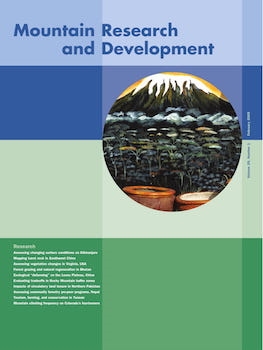This study investigated the sustainability of combining forest grazing and timber harvesting with selection felling in a cool broadleaved community forest (CF) in Bhutan. Forest grazing and timber production are critical livelihood activities for many farmers throughout the world, so it is important to understand under what conditions the 2 activities can be combined. The study was based on a household survey to quantify livestock holdings and grazing patterns, a comparison of 2 forest inventories to assess forest structure and regeneration, and a study of stumps to quantify harvesting intensities. During a 5-year period the number of cattle grazing inside the CF significantly decreased and the number of naturally regenerated tree seedlings and saplings significantly increased. There were no other changes in forest management practices during the period that would affect natural regeneration, and there were no significant changes in the volume of wood harvested or the volume/number of standing trees (with a diameter at breast height ≥10 cm). We concluded that moderate intensities of forest grazing (0.4 cattle*ha−1) and timber harvesting (4.64 m3*ha−1*y−1) can be combined in this type of forest without negative impacts on forest regeneration. Our findings support Bhutan's policy of allowing forest grazing in CFs.
How to translate text using browser tools
1 February 2009
Forest Grazing and Natural Regeneration in a Late Successional Broadleaved Community Forest in Bhutan
Bill Buffum,
Georg Gratzer,
Yeshi Tenzin
Bhutan
cattle grazing
community forestry
forest policy
forest regeneration
selection felling





